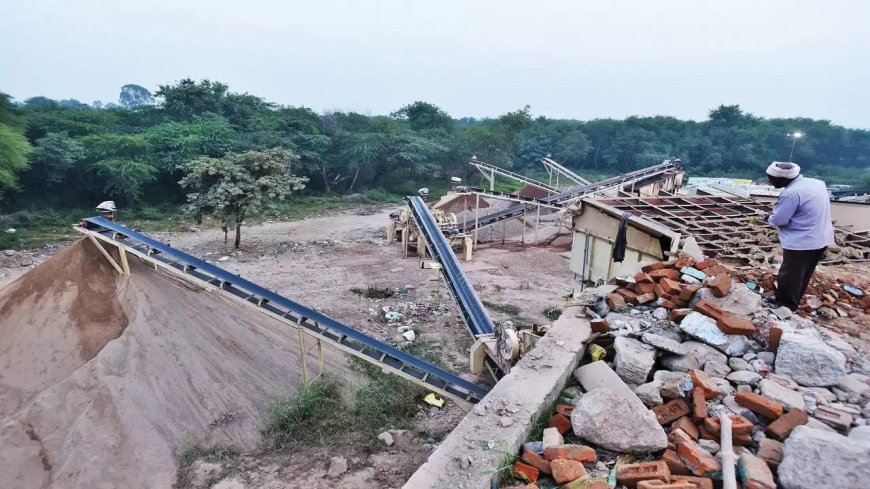Dr. Prashant P. Bhave
Professor (Adjunct) & Retd. Professor (Asso.) & Head, Environmental Engg VJTI, Mumbai
Growing urbanisation and infrastructure developments generate waste in large quantity. How do you look at this adversely impacting the environment and sustainability?
The urbanisation is a direct function of infrastructure development, meaning urbanisation mandatorily involves upgrading and expanding the infrastructure and so is the solid waste.
As the infrastructure develops, waste generation is inevitable. Any waste if not managed properly is a threat only, as it has direct and negative implications on the surrounding, i.e. environment. In the earlier era, we had enough of capacity of earth or surrounding to absorb such a waste or for that matter any kind of waste. But looking at the present and future pace of development, the present limited sustaining capacity of earth, rampant increase of waste is a big threat to the environment and sustainability.
Mumbai generates approximately 6,000 MT of construction and demolition (C&D) waste per day. To manage such a huge quantity from the urban local body (ULB) is a colossal task. For years and decades, we have been dumping this kind of waste indiscriminately. The consequence is evident, that we have degraded our environment severely. We must now act fast to at least control the further environmental degradation.
Recycling is the ideal way to minimise the impact of urban and C&D waste. What kind of recycling processes are ideal for our country?
Any development or growth is resource-intensive. Conservation of the resources is the only way out to minimise the impact of any type of urban waste, in particular commonly known as municipal solid waste (MSW) and C&D waste is an integral part of it with its significant share.
Recycling is one of the important ways of managing the C&D waste. Identification of various elements of C&D waste with their utilisation potential is the first step, further developing methods of collection or segregated collection, and extraction of the identified reusables can be a second step. Further, the extracted C&D waste needs to be organised for its reuse effectively. Inert materials so drawn from the C&D waste is to be cleaned properly and size separated and graded. Such material needs to be as per the standards as applicable for the recycled materials.
The C&D waste recycling facilities available at Indore, Madhya Pradesh, which was named India's cleanest city for the seventh year in a row in 2023. The similar type of facilities is replicated by few other ULBs in the country. These recycling facilities need to be environmentally and financially sustainable too and also cater to all or significant amount of C&D waste created in the ULB. Also needed is a system for judicious use of reclaimed materials such created in the projects.
C&D waste creates a lot of ecological issues in the long run. What are the technologies and solutions offered in C&D waste recycling?
Mismanaged construction and demolition affect the surrounding environment in both short and long term. On time scale, the effects are relatively less immediately over a serious long-term effect. Loss and degradation of the fertile soil, vegetation, biodiversity, surface, subsurface water, urban flooding, creation of heat islands etc are some of the ecological issues in long term.
While talking about the recycling technologies, we need to understand the nature of such waste. It is practically inorganic or inert in nature. It doesn’t degrade over the years. The major contents in C&D waste are sand, aggregate, masonary, mortar and concrete along with softer materials such as bricks, wood, glass, plastic, ferrous & nonferrous metals that are mixed during its creation.
Some of the ingredients such as metal as reinforcement is recycled for times because of its scrap value and a known resource. But the cement concrete, needs to be converted into the form of reusable material as aggregates or inert ingredients useful for various grades of construction material and concrete.
At present, technologies such as shredding, sieving and grading are being used to produce recycled aggregates. Input to such recycling technologies or plants also need segregated C&D waste as concrete, bricks, plastics, wood is a must to generate the quality recycled produce.
How is roads segment emerging as a major contributor to utilising solid waste like plastic waste?
Roads, pavements and other low lying or filling sites need a filling material having minimal or least settlement. We can use C&D waste being inert and prone to less settlement, if compacted properly. It can also provide the required drainage to the adjoining moisture, load bearing capacity and durability as per the required engineering properties. Only it needs to be designed considering the recycled C&D waste properties for base, subbase and even with the top layers. Innovative field applications of plastic wastes, industrial wastes such as slag etc for roads are proven and in practice, globally.
What are the emerging opportunities in C&D waste recycling? What is your vision on a sustainable future for Indian construction industry?
C&D waste management should emerge as a model for SWM by the ULBs as waste generator and need citizen-friendly approach for collection, transportation and treatment or environment-friendly management.
The state and central governments along with ULBs should adopt proactive approach by providing incentives to the developers/waste generators from the infrastructure development sectors for sustainable and environment-friendly approaches for the repairs and upcoming projects.
C&D waste recycling plants for SWM should also be promoted as a business model for creating various aggregates and construction materials.

Provision and development of Indian standards and specifications for recycled components of the C&D waste for various identified construction activities is an urgent need.
C&D waste management which includes collection and processing need to be levied with the convenience/user fee and a heavy penalty should be imposed on illegal dumpers and those who violate the norms. These provisions have no profit no loss base of revenue creation, to make it user friendly. This will help in efficient operation of the recycling facilities, too. This can also be operated with various existing financial models such as BOT, BOOT etc.
For the smart cities, smart infrastructure can be successfully implemented using C&D waste with the active participation of all the stakeholders such as waste generators, citizens, policy makers, technocrats, researchers and ULBs or government as implementors. Lopsided and partial participations of the stakeholders is not going to deliver the desired results.
A few of the ULBs in our country have already started working on the above suggested measures. But C&D management through recycling appears to be one of the most sustainable ways in the era of infrastructure development. We need to act well in time as we don’t have a second earth.









